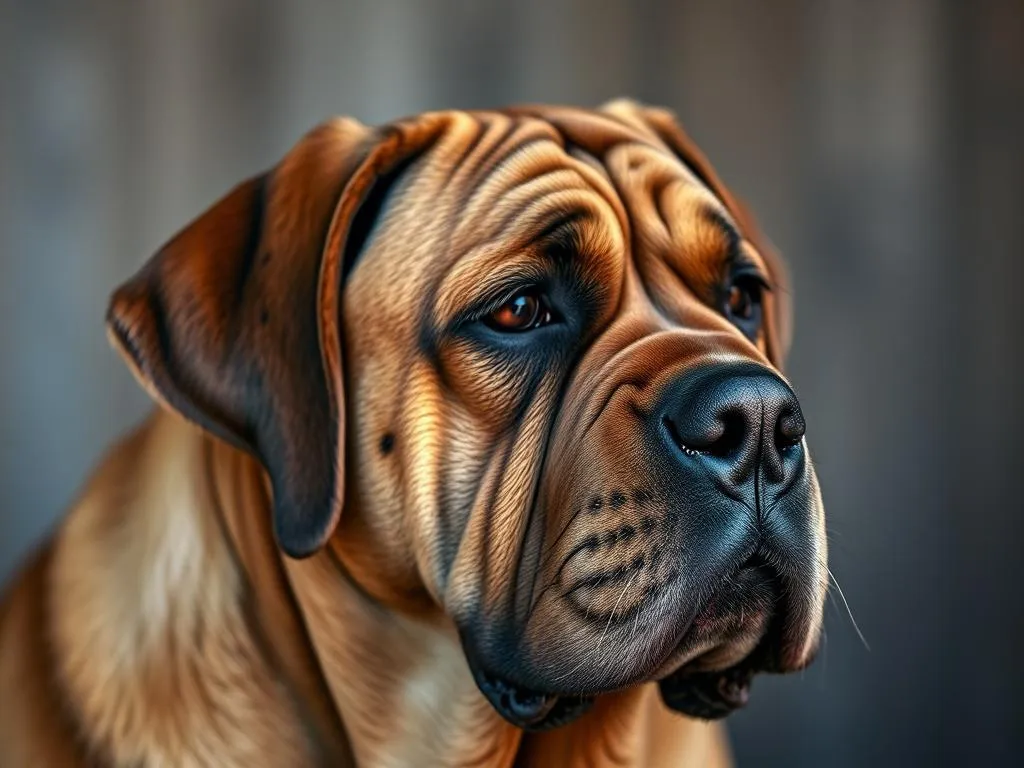
Introduction
Dog breeds come in all shapes and sizes, each with its unique characteristics, temperament, and care requirements. Understanding different breeds is crucial for potential dog owners to ensure they choose a pet that fits their lifestyle. Among these breeds, the Majorca Mastiff stands out as a unique and fascinating option. This robust breed not only boasts a rich history but also a gentle temperament that makes it an excellent choice for families. In this article, we will explore the Majorca Mastiff in detail, shedding light on its history, characteristics, health considerations, training needs, and suitability as a family pet.
Understanding Dog Breeds
What is a Dog Breed?
A dog breed is a specific group of domestic dogs with particular traits and characteristics that distinguish them from other breeds. These traits can include physical attributes, behavioral tendencies, and genetic predispositions. Understanding a breed’s characteristics is essential for potential owners as it helps predict how a dog will behave in various situations and how they’ll fit into a household.
The Role of Genetics in Dog Breeds
Genetics play a significant role in shaping a dog’s temperament and health. Each breed has a breed standard, which is a set of guidelines that describe the ideal physical and behavioral traits of that breed. This standard helps maintain the breed’s integrity and ensures that desirable traits are passed down through generations.
The Majorca Mastiff: An Overview
History of the Majorca Mastiff
The Majorca Mastiff (also known as the “Ca de Bou”) has its origins in the Balearic Islands, specifically Majorca. This breed was initially developed for a variety of purposes, including guarding livestock, property, and hunting wild boar. The Majorca Mastiff has a historical significance in Majorca, where it has been cherished for generations. It reflects the ruggedness of the island and has adapted well to its environment. Over time, the breed has gained popularity beyond its native region, appreciated for its loyalty and protective nature.
Physical Characteristics
The Majorca Mastiff is a large breed, typically weighing between 90 to 150 pounds (40 to 68 kg) and standing about 24 to 30 inches (61 to 76 cm) tall at the shoulder. This breed has a muscular build, which is indicative of its working origins. The coat is short and dense, with colors ranging from fawn to brindle, often with a black mask. One of the breed’s most distinctive features is its broad head and powerful jaws, which contribute to its imposing appearance.
Temperament and Behavior
The Majorca Mastiff is known for its gentle yet protective temperament. While they are naturally aloof with strangers, they are affectionate and loyal to their families. This breed requires early socialization to ensure it grows into a well-adjusted adult. They can coexist well with other pets, provided they are introduced properly and socialized early. Their compatibility with families makes them a popular choice for households with children, as they are generally patient and protective.
Health Considerations
Common Health Issues in Majorca Mastiffs
Like many large breeds, the Majorca Mastiff is susceptible to specific health issues. Some of the most common concerns include:
- Hip Dysplasia: A genetic condition where the thigh bone doesn’t fit snugly into the hip joint, leading to arthritis and pain.
- Heart Conditions: Certain heart diseases can be prevalent in the breed, necessitating regular veterinary check-ups.
- Other Breed-Specific Health Concerns: These may include issues related to obesity, skin conditions, and certain eye problems.
Preventive Care
Preventive care is vital for maintaining the health of a Majorca Mastiff. Regular veterinary check-ups can help catch potential health issues early. Additionally, staying up to date with vaccinations and screenings is crucial. Responsible pet ownership includes being proactive about health and wellness.
Diet and Nutrition
Feeding a Majorca Mastiff a balanced diet is essential for maintaining their health. A high-quality commercial dog food that is appropriate for large breeds is recommended. Owners should pay attention to portion sizes to prevent obesity, a common issue in this breed. Consulting with a veterinarian about the best diet tailored to a Majorca Mastiff is always a wise choice.
Training and Socialization
Basic Training Techniques
Training a Majorca Mastiff requires consistency and patience. Due to their size, obedience training is particularly important. Positive reinforcement techniques, such as treats and praise, work well with this breed. They respond best to clear commands and structured training sessions.
Socialization Strategies
Early socialization is crucial for the Majorca Mastiff. Exposing them to various environments, people, and other animals can help reduce the likelihood of fear-based aggression. Puppy classes and supervised playdates with other dogs are excellent ways to facilitate socialization.
Dealing with Behavioral Issues
Common behavioral problems in Majorca Mastiffs may include stubbornness and territoriality. If behavioral issues arise, it is essential to address them promptly. Seeking professional help from a dog trainer who specializes in large breeds can provide valuable guidance.
Lifestyle Considerations
Exercise Requirements
The Majorca Mastiff requires regular exercise to maintain a healthy weight and mental stimulation. Daily walks, playtime, and activities that engage them physically are important. Aim for at least 60 minutes of exercise each day, which can include brisk walks, play sessions, and even agility training.
Living Arrangements
While the Majorca Mastiff can adapt to various living environments, they thrive in homes with ample space. Whether in an urban or rural setting, having a secure yard where they can roam freely is ideal. This breed does not adapt well to being confined in small apartments without regular outdoor access.
Grooming Needs
Grooming a Majorca Mastiff is relatively straightforward due to their short coat. Regular brushing helps reduce shedding and keep their coat healthy. Bathing should be done as needed, typically every few months, unless they become particularly dirty.
Majorca Mastiffs as Family Pets
Ideal Family Dynamics
The Majorca Mastiff is suited for families who can provide the necessary training, socialization, and exercise. They are ideal for families with older children, as their size and strength can be overwhelming for younger kids.
Interactions with Children
Generally, Majorca Mastiffs are known for their gentle demeanor with children. They can be very protective, making them excellent companions for kids. However, supervision during playtime is essential to ensure safe interactions.
Adoption and Rescue
When considering adding a Majorca Mastiff to your family, it’s important to find reputable breeders or consider adopting from shelters. Many rescue organizations specialize in this breed, providing homes for dogs that need a second chance. Researching these organizations can lead to finding a loving companion.
Conclusion
The Majorca Mastiff is a remarkable breed that can make a wonderful family pet for those who understand their needs and characteristics. With proper training, socialization, and care, these dogs can thrive in a loving home. Responsible dog ownership includes being aware of health considerations and ensuring a suitable lifestyle for this loyal and protective breed. If you’re considering a dog that blends strength with gentleness, the Majorca Mastiff may just be the perfect fit for you.
Frequently Asked Questions (FAQs)
What is the average lifespan of a Majorca Mastiff?
The average lifespan of a Majorca Mastiff is typically between 10 to 12 years, although this can vary depending on health and care.
How much does a Majorca Mastiff typically cost?
The cost of a Majorca Mastiff can range from $1,000 to $2,500, depending on factors such as breeder reputation and bloodline.
Are Majorca Mastiffs good with other pets?
With proper socialization, Majorca Mastiffs can coexist well with other pets. Early introductions and consistent training help ensure harmonious relationships.
What is the best way to train a Majorca Mastiff?
The best way to train a Majorca Mastiff is through positive reinforcement techniques, consistency, and regular obedience training sessions. Early socialization is also key to their development.
In considering a Majorca Mastiff, potential owners should appreciate the breed’s unique characteristics and be prepared to invest time and effort into training and care. Embracing the responsibility of dog ownership can lead to a rewarding companionship filled with loyalty and love.









